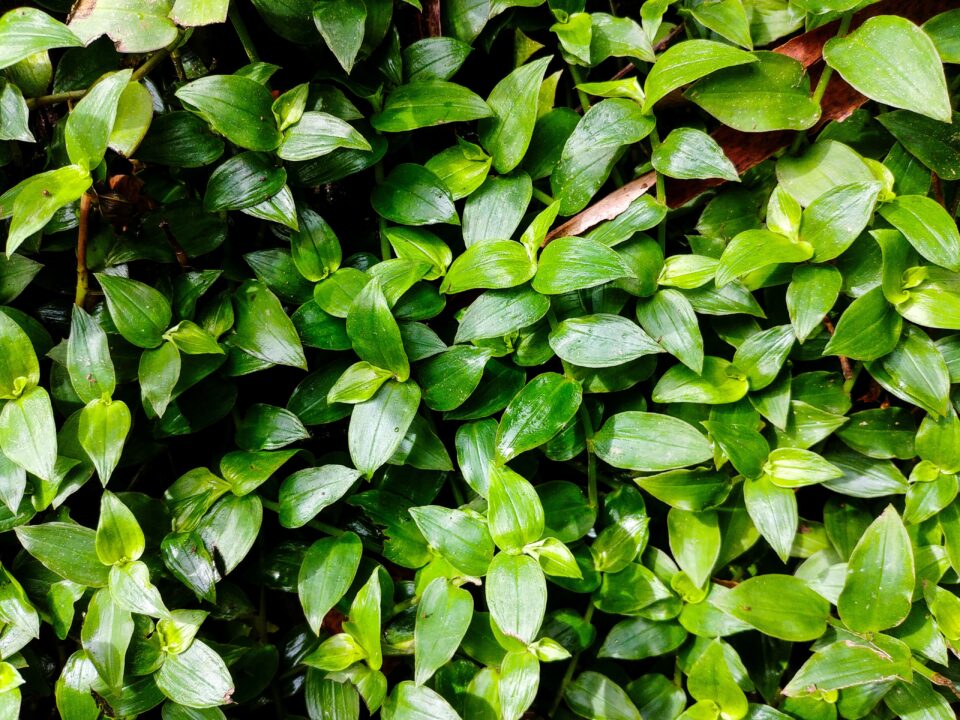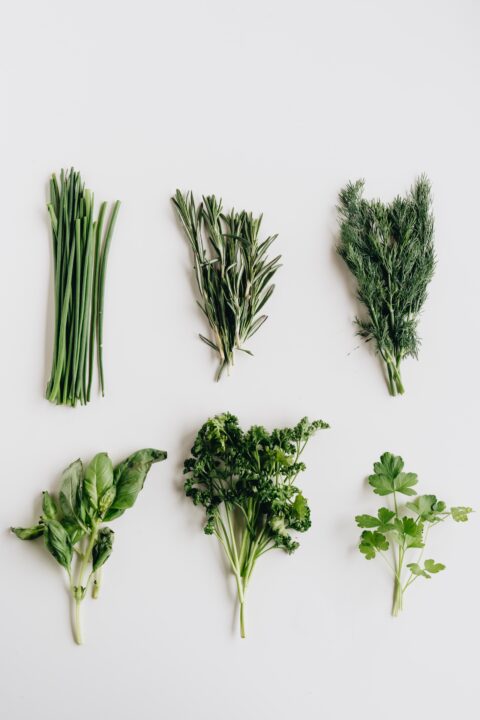Cilantro is a type of herb that is cultivated mostly in Western Asia, Southern Europe, and Northern Africa and has been in existence for over 2000 years. This herb is known for its medicinal benefits and multi-purpose uses, hence its significance. Regardless of the different types of cilantro, the health benefits remain consistent.
Research shows that all the parts of this plant are edible, from its leaves through the seeds to the stems, which have a zesty nature. However, the different types of cilantro are the most used vegetables, which serve as a source of food, act as medicine, and give a natural aroma to food because of their flavor.
In this article, we’ll discuss these unique plants, their types, health benefits, and how you can cultivate them.
What is a Cilantro plant?
The cilantro plant, which is also known as coriander in some regions of the world, is an annual herb in the family Apiaceae used in culinary dishes. The leaves are greenish, producing pale pink flowers.
Furthermore, several regions regard cilantro and coriander as the same thing. However, it is different. Cilantro is a freshly harvested plant with green leaves, while coriander is a dried fruit used as an herb. The leaves and seeds are edible and give a unique aroma to your dishes. Several people perceive coriander seeds as having a tart, lemon/lime taste and are used as a spice in cooking and for making seasonings.
The leaves are frequently used as a garnish or in various cuisines, especially in Mexican, Indian, and Southeast Asian dishes. Cilantro is known for its fresh and citrusy flavor and is a popular herb in many global cuisines, although there are different types of cilantro, which we’ll delve into.
8 Types Of Cilantro
There are several types of cilantro; however, in this article, we’ll be focusing on 8 different types of cilantro.
1. Slow-Bolt Cilantro
-

jordan rushton, pexels, 11372371.jpg
Slow-bolt cilantro is the variety of cilantro that is slow to bolt, which makes it possible for extended harvesting in warmer weather. There are several types of slow-bolt cilantro, such as the Leisure, standby, advanced turbo II, caribe, sun master cilantro, Calypso, Jantar, and confetti.
- The leisure cilantro is heat-resistant which makes the leaves mature in 51–55 days and in 100–110 days for seeds. It is slower to bolt than others, and it produces flowers and seeds that stay leafy and aromatic always. The leaves are green in color, flat, and feathery. The Leisure cilantro has an aromatic flavor.
The Standby cilantro is also slow to bolt and most of it hardly bolts during cold weather. It is very quick to mature, it takes up to 45–50 days for leaves and 100–110 days for seeds. Standby cilantro is easy to keep around when the weather is cold
- Advanced Turbo II is disease-resistant and heat-resistant. It grows very fast, which takes up to 35–40 days to harvest and it’s also slow to bolt. This species of cilantro is resistant to bacterial pathogens.
- Sunmaster cilantro is also heat-resistant and very slow to bolt. The leaves are cold, hard, large, and dark green. It grows very fast, which takes up to 55 days for leaves and 100 days for the seed to mature.
- Calypso cilantro has soft leaves and a distinctive cilantro flavor. It’s a common preference for culinary use. And it is known for its bushy plants that are slow to bolt.
These types of cilantro share similar characteristics of slow-bolt and fast-mature. Selecting one of these species can be a great way to ensure a more consistent supply of cilantro throughout the growing season.
2. Vietnamese Cilantro

Another type of cilantro is Vietnamese cilantro, which is also called “Rau Ram” or “Persicaria odorata”. It has a peppery flavor, which is popularly used in Southeast Asian cuisine. This species of cilantro is slightly different from cilantro in its appearance.
Vietnamese cilantro doesn’t bolt in hot weather. It thrives in conditions with filtered shade, consistently moist soil, and proper drainage. This species naturally reaches heights of six to 12 inches and spreads six to 18 inches, and it’s considered a perennial in USDA Hardiness Zones 9b to 12b.
In terms of taste, fresh Vietnamese coriander is a delightful addition to spicy noodles or Asian-style soups, lending a refreshing and aromatic element to dishes. It’s more commonly available as a live plant than in seed form. It is essential to choose the right variety of cilantro for cooking to give you your desired taste and flavor.
3. Moroccan Cilantro
-

jordan rushton, pexels, 11372365.jpg
Moroccan cilantro, much like cilantro used in various culinary traditions, specifically signifies the coriander plant’s leaves. It is a commonly used herb in Moroccan cooking, adding a zesty, citrusy aroma to a range of dishes, including tagines, couscous, salads, and assorted stews.
Moroccan cuisine differentiates itself by using both the leaves (referred to as cilantro) and the seeds (coriander seeds) of the coriander plant to enrich the flavor of recipes, producing the unique and aromatic taste characteristic of Moroccan dishes.
Research shows that ‘Moroccan’ cilantro is known for its early flowering, making it appealing for those cultivating this herb to attract pollinators or for seed production. ‘Moroccan’ cilantro yields fresh leaves in just 45 days and seeds in as little as 90 days. You can even grow your coriander seeds, dry and grind them, and incorporate the ground coriander into homemade Moroccan couscous.
4. Culantro Cilantro
Culantro Cilantro, also known as “Eryngium foetidum” or “spiny cilantro,” is most often mistaken for cilantro. However, it has long, serrated leaves with a stronger flavor than traditional cilantro. It is a common spice in Caribbean, Latin American, and Asian cooking.
Culantro cilantro still maintains its taste and color even when dried. It thrives in partially shaded areas with moist soil within a pH range of 6.1 to 7.8. It can be grown as a perennial in USDA Hardiness Zones 7 to 11 and produces fresh leaves in approximately 80 to 90 days.
Culantro’s flavorful leaves are commonly used in the base of many delicious dishes, such as sofrito. You can find culantro seeds in various quantities online through stores.
5. Santo Cilantro
-

rajesh s balouria, pexels, 10048317.jpg
Santo is a widely cultivated type of cilantro that is known for its excellent flavor and its ability to resist bolting, especially in hot weather conditions. Santo cilantro is also known as ‘Long Standing cilantro,’ which has shady green leaves with an awesome taste, making it a preferred choice for numerous gardeners.
Santo cilantro has a slower tendency to go to seed. The leaves can be harvested in approximately 50 to 55 days and the seeds take 90 to 105 days.Santo seeds enhance Mexican or Tex-Mex dishes such as chili, burritos, and guacamole.
If you’re interested in trying this species, the seeds are available in various package sizes through True Leaf Market.
6. Delfino Cilantro
Delfino cilantro stands out due to its intricately cut, lacy leaves and gentle flavor profile, which is gentler when compared to the standard cilantro variety. Similar to ‘Confetti,’ this cilantro variation boasts finely divided, feather-like foliage, but ‘Delfino’ is notably more productive.
You can start harvesting bunches of ‘Delfino’ foliage in just 35 days, and it begins to set seeds in 80 to 85 days. With its delicate, wispy leaves, ‘Delfino’ requires minimal chopping and is an excellent addition to lime cilantro yogurt sauce, a delightful dip that pairs perfectly with the fresh garden vegetables you’re likely cultivating.
To get your hands on ‘Delfino’ cilantro seeds, you can purchase packs containing 100 seeds from Hirt’s via Amazon.
7. Large Leafy
The ‘Large Leaf’ cilantro variety is specifically cultivated for its abundant foliage, making it an excellent choice for harvesting cilantro greens. It has been selectively cultivated to maximize its leaf production, exceeding other cultivars by up to fourfold.
One of its important features is its slow bolting tendency, which ensures a prolonged harvest period. ‘Large Leaf’ typically yields bunches of leaves ready for harvesting within 40 to 50 days, with flowering occurring between 90 and 100 days.
If you’re interested in cultivating ‘Large Leaf’ cilantro, you can find seeds from sellers specializing in rare and heirloom varieties.
8. Papalo Cilantro
If you’re a fan of the unique flavor of cilantro, you might also appreciate another herb called papalo (Porophyllum ruderale). Papalo has a distinct taste, often described as a blend of cilantro, arugula, cucumber, and citrus.
This herb, also known as ‘Bolivian coriander,”papaloquelite,’ or ‘yerba porosa,’ is an annual plant that can grow to a height of three to five feet with a spread of about 12 inches. What distinguishes papalo from cilantro is its ability to withstand hot weather without bolting. Its oval-shaped leaves have scalloped edges and a succulent texture and are marked with glands containing essential oils.
The seed head of papalo resembles that of dandelions, as both belong to the daisy or Asteraceae family. It’s best enjoyed fresh and is not typically cooked or dried. Instead, you can incorporate it into cool or room-temperature dishes or use it as a garnish for hot meals just before serving.
Keep in mind that papalo seeds have low natural germination rates, so it’s wise to sow a sufficient quantity to compensate for any that may not sprout.
Benefits Of Cilantro Plant
There are several health benefits of the cilantro plant, such as:
- It protects the body, especially the liver, from heavy metals and toxins. It can also remove toxic metals like mercury from the central nervous system (CNS).
- Coriander helps in treating various skin infections, acting as a potential sunscreen, and benefiting those with noninsulin-dependent diabetes mellitus and dyslipidemia.
- It exhibits anxiolytic (anxiety-reducing), sedative, and pain-relieving effects.
- Cilantro leaves have been reported to enhance mercury excretion, particularly after dental amalgam removal. In animal studies, it reduced lead absorption into bones.
- It can address a range of health issues, including indigestion, worm infestations, rheumatism, loss of appetite, anxiety, insomnia, and joint pain.
- Research suggests that coriander seed can help normalize blood sugar levels, reduce insulin resistance, and lower cholesterol and triglyceride levels, making it beneficial for diabetes management.
In summary, cilantro offers a range of potential health benefits, ranging from minute to severe ailments.
Final Words
Cilantro’s ability to preserve the body from heavy metals and dietary toxins promotes the need to include it more in our diets, especially in light of the increasing food contamination concerns.
The different types of cilantro have unique flavors, aromas, and uses. Whether it’s the bright and citrusy flavor of standard cilantro, the milder taste of Vietnamese cilantro, or the distinctive pungency of culantro, these different varieties offer a world of culinary possibilities. Experimenting with different types of cilantros can add depth and variety to your dishes, making them more flavorful and tasty.







